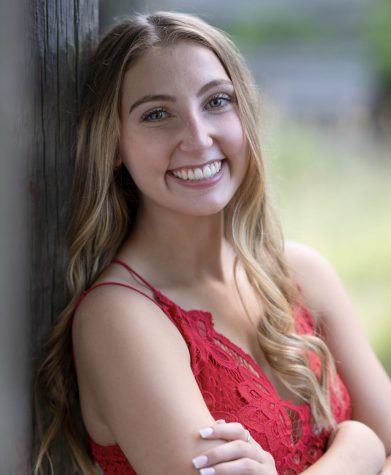Living as LGBTQ+
Students discuss topics regarding sexuality, gender identity

Within the last century, especially in the last 20 years, the queer community has blossomed. Although people who don’t identify as straight men or straight women have always been around, many of these people were — and still are — alone in their battle with acceptance and identity from others and themselves.
Sexuality is described by what or who you are attracted to, and gender identity is an individual’s personal sense of having a particular gender or no gender at all.
Senior Charlie Klepper came out as homosexual when he was 13 years old and uses he and him pronouns.
“I was nervous to come out to family members even though they have been fairly supportive,” Klepper said. “The stress of coming out is way worse than the actual experience. After, it’s such a relief because you no longer feel like you are hiding parts of yourself.”
Sophomore Olyver Bradwell is non-binary and uses they and them pronouns. They have struggled with their gender identity for five years.
“It’s all been about looking too feminine and feeling extremely uncomfortable when I hear ‘she’ or ‘her’ when being referred to,” Bradwell said. “I’ve been told that even if I was trans, I could never pass in public for my very feminine features.”
Perception and beliefs can be formed as a result of where people are raised. Same-sex activity is legal in Kansas, and the state has prohibited discrimination on the basis of sexual orientation and gender identity in employment, housing and public accommodations since 2020. Following the United States Supreme Court decision in Obergefell v. Hodges, same-sex marriage became legal in Kansas June 26, 2015.
“I don’t think Kansas City has a very big problem with being particularly homophobic but there are other parts of Kansas and Missouri, once you get into the more rural, small towns, that I definitely try to make myself act ‘straighter’ because I’m not always sure that everyone is going to be accepting,” Klepper said. “It can be very scary to not know if someone could instantly just hate you.”
Regardless of the location, many people still experience discrimination, homophobia or transphobia because of their sexuality and or gender identity.
“I’ve been told I’m schizophrenic or mentally ill for thinking I’m ‘more than one person’ when using they/them pronouns,” Bradwell said. “ I’ve been threatened, received death threats and bullied for what I want to be: comfortable.”
Klepper faces judgments and criticism for his sexual preference as well.
“I wouldn’t say I experience very blatant homophobia like hate speech and slurs,” Klepper said. “But I’d say I deal with homophobic micro-aggressions almost daily, which could range from people making assumptions about me based on preconceived stereotypes or hearing the word gay used as a derogatory term.”
At school, more and more teachers and students are recognizing gender cannot be assumed and doesn’t necessarily fall under just male or female, but it is still a learning process.
“I feel staff members could be more accepting by asking for pronouns on the first day of school when they’re getting to know everyone, like their preferred pronouns and preferred names,” Bradwell said. “[Peoples] minds will always go to the she/her and he/him pronouns, or anything other than they/them because they/them is always seen as plural.”
Klepper feels staff members should take a stronger stand against homophobia, especially in the classroom.
“Teachers have never really punished kids for calling me gay or being homophobic even before I was out,” he said. “[It’s] something I’ve had to learn how to manage because no one is going to be there 100% of the time to defend me. I can only hope people realize how they look when they are homophobic and how wrong they are for ever thinking it is right.”
These harsh statements make the acceptance process even more difficult.
“I shouldn’t have to deal with something like that,” Bradwell said. “No one who deals with gender identity or who are a part of the LGBTQ+ community should.”

Claire Stein is a senior, and this is her first year on staff. She enjoys drinking coffee, going shopping, hanging out with friends and listening...



